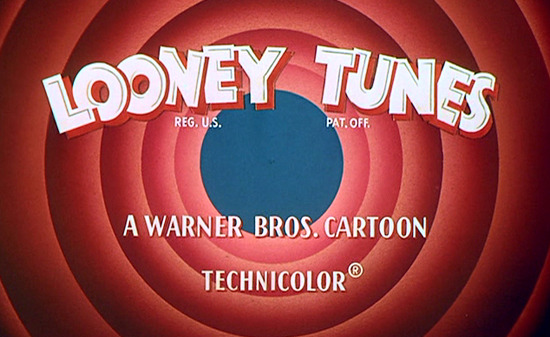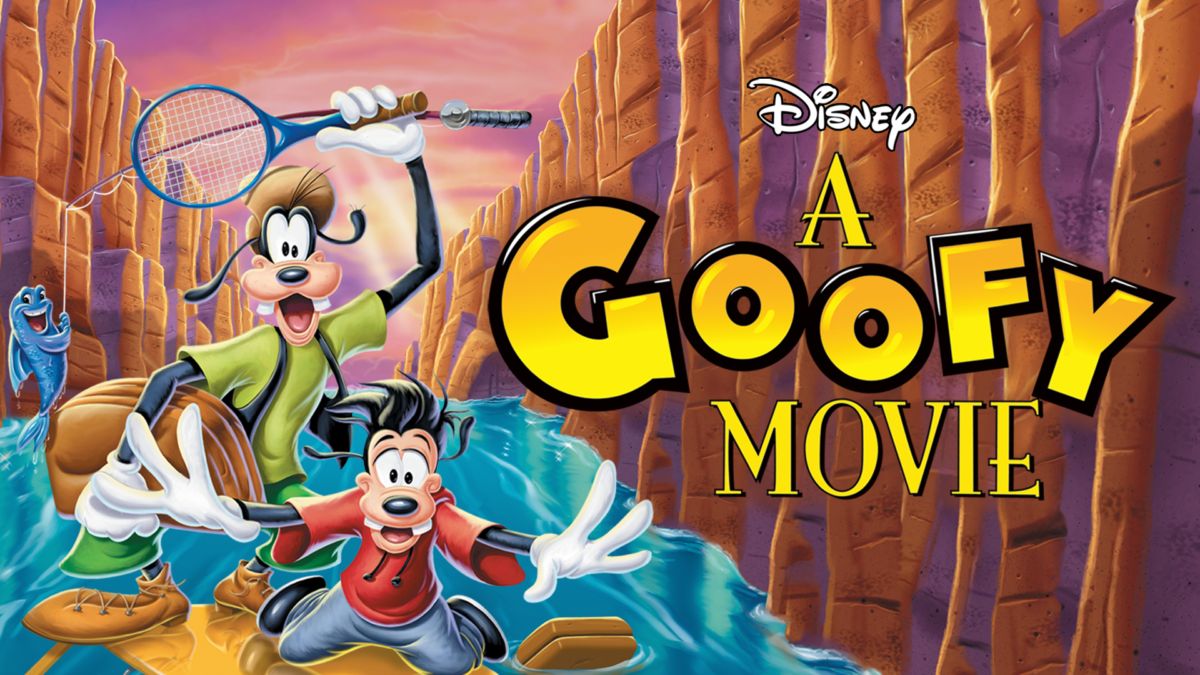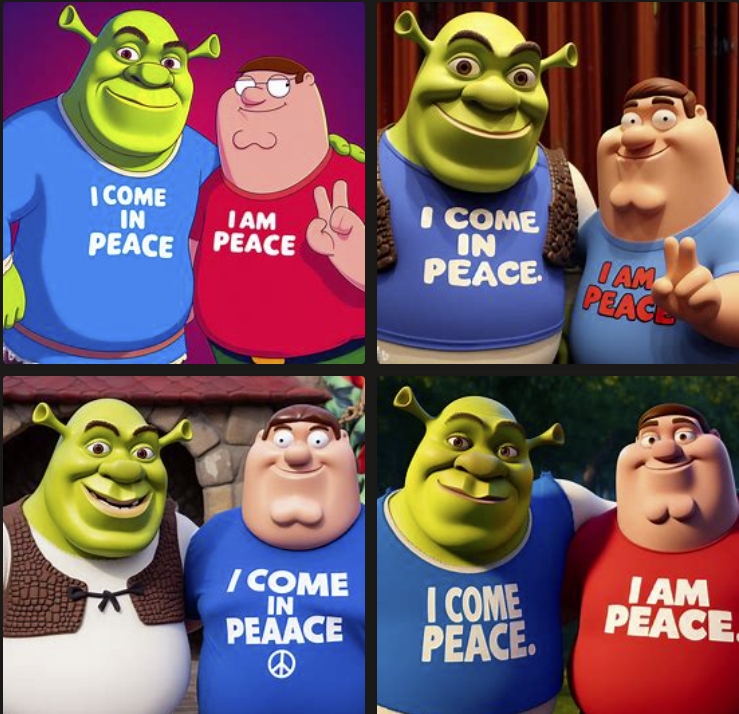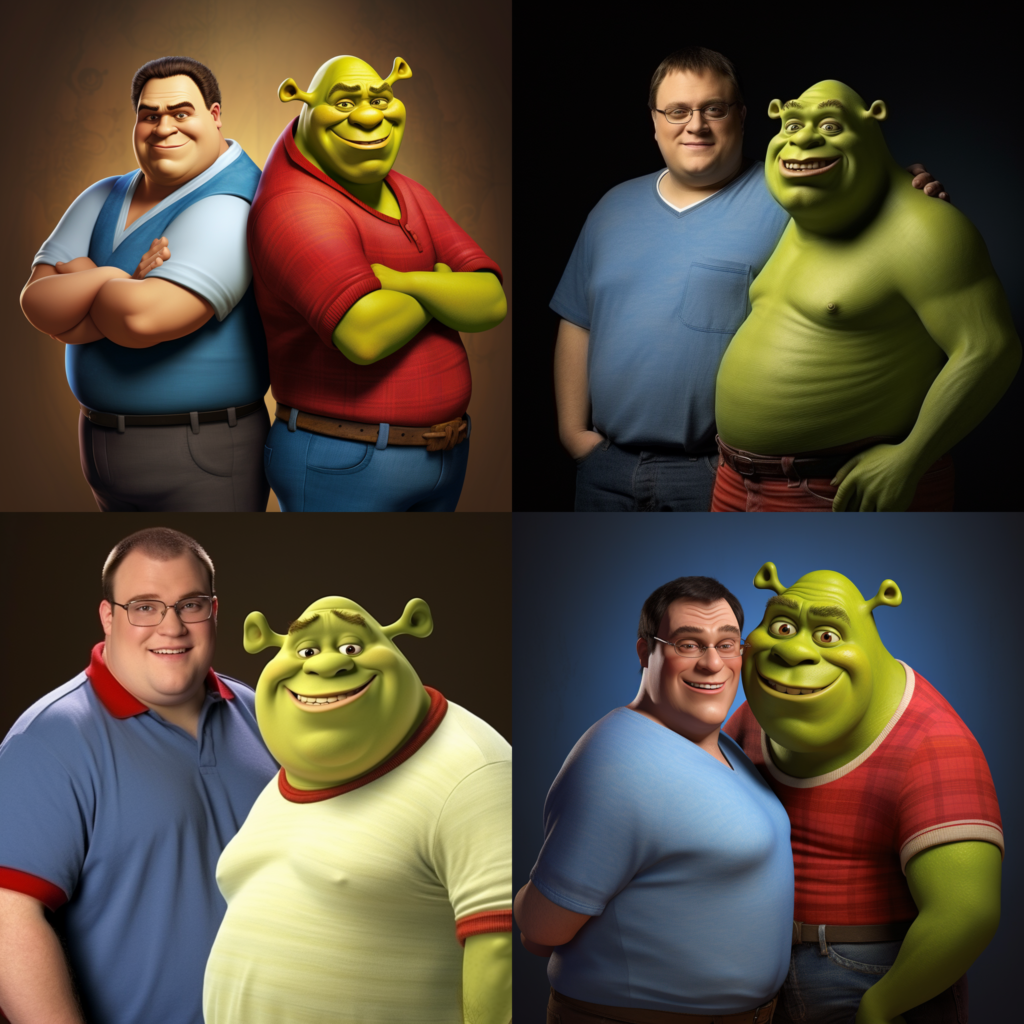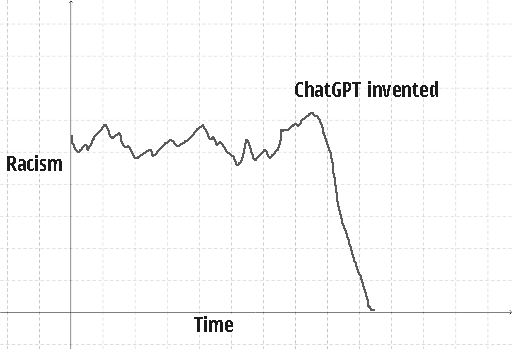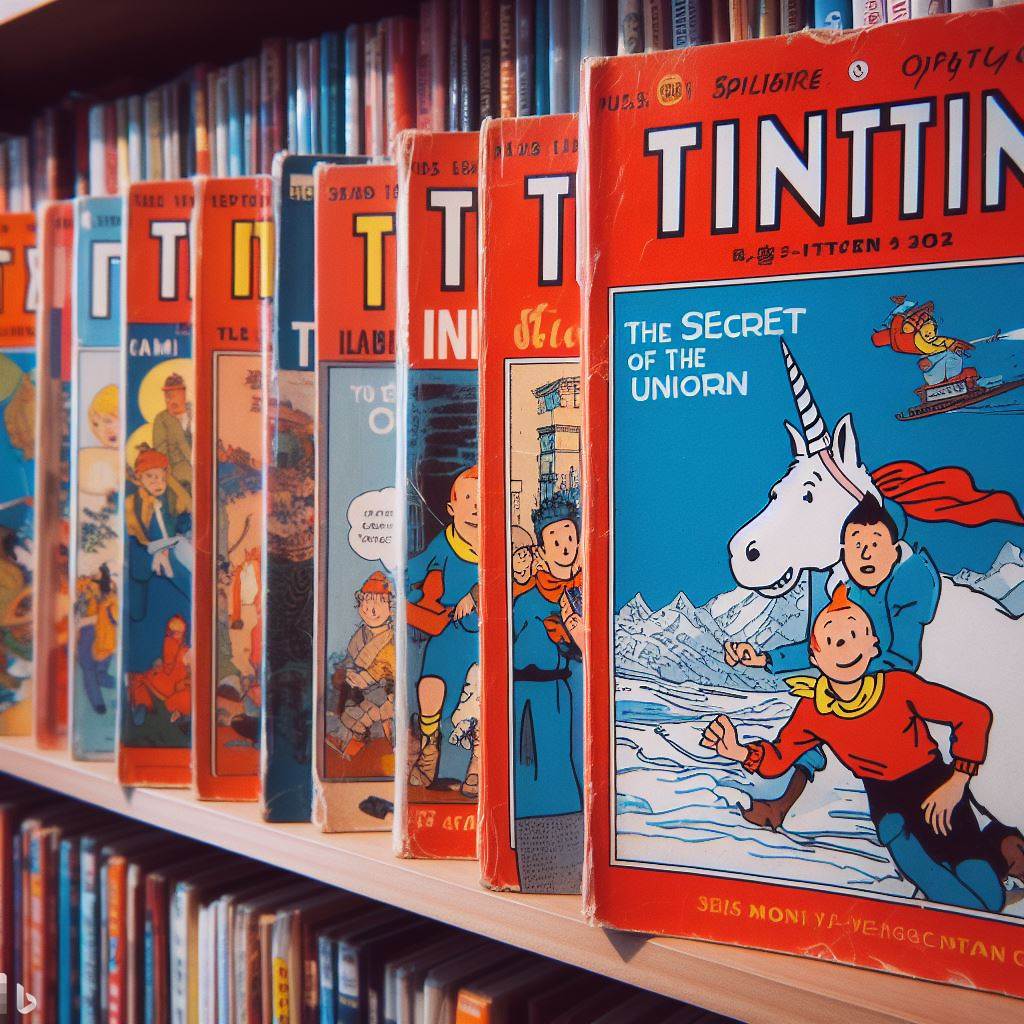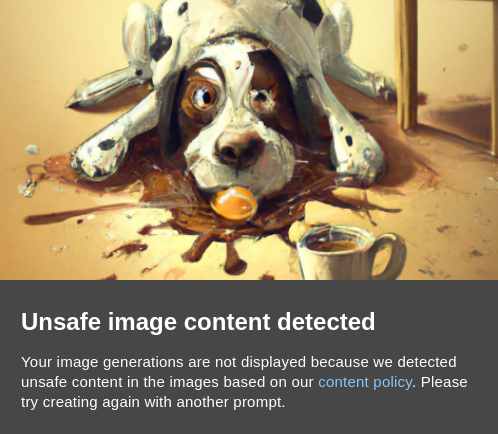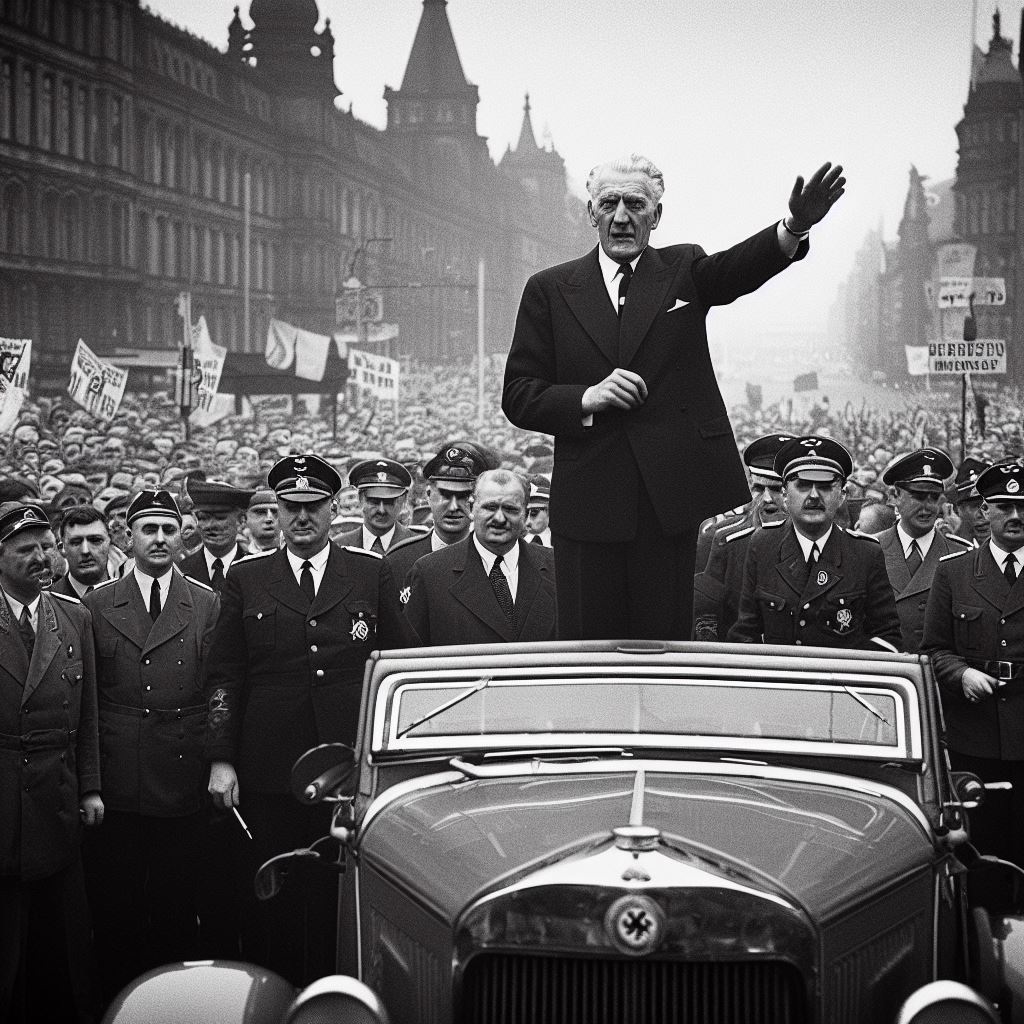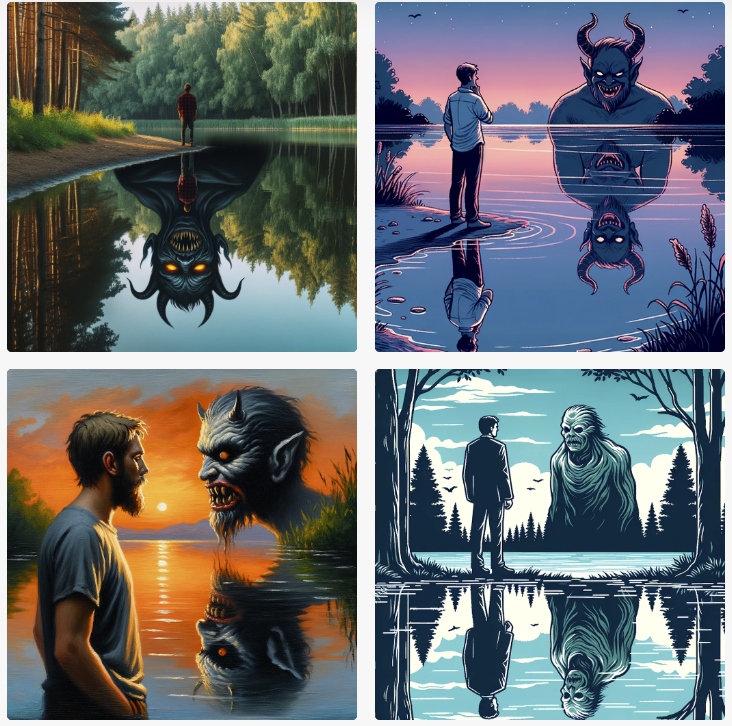I watched the Censored Eleven today. I watched them the right way: shaking my head the whole time so people didn’t think I was racist. It was a little weird because there weren’t any people (I was alone in my room), but God was watching. God might have thought I was racist.
What are the Censored Eleven? A legendary group of Prohibition-era Warner Bros Cartoons, banned because they contain [BLANK]. Guess the word.
Or maybe you can’t. It’s not “racism”. There are many racist WB cartoons (“Tokio Jokio”?) not present on the list. Saying “the Censored Eleven are banned because of their racism” is like saying “uranium-235 is banned because of its atoms”: you are not exactly wrong but the problem is more specific. They are banned because they depict minstrelsy.*
They are animated versions of 19th century Rastus/Jim Crow-style theater where Caucasian actors—wearing burnt-cork black makeup on their faces and white gloves on their hands—would portray black people as whooping, happy-go-lucky buffoons, to the adulation of what Frederick Douglass called “the filthy scum of white society”.
A century of scholarly analysis has dissected minstrelsy so I don’t have to. In brief, early minstrel shows were promoted as a way for Northeners to experience “authentic” black Southern culture. One might have questions about this authenticity, yet there seems to have been a token effort in that direction: minstrel troupes were advertised as being able to “harmonize and score systematically with the original negro solos”, and at least one had a black actor (Andrew Allen).
However it started, minstrelsy quickly devolved into wishful Southern mythmaking. It presented a romantic image of foolish but happy darkies, singing slave songs and knowing their place. They were a way for poor whites to feel superior to someone…anyone. “We might be stupid hicks, but at least we’re not black!” You wouldn’t be far wrong to regard minstrel shows as a cultural version the smallest boy on the playground getting beaten up by the second smallest boy.
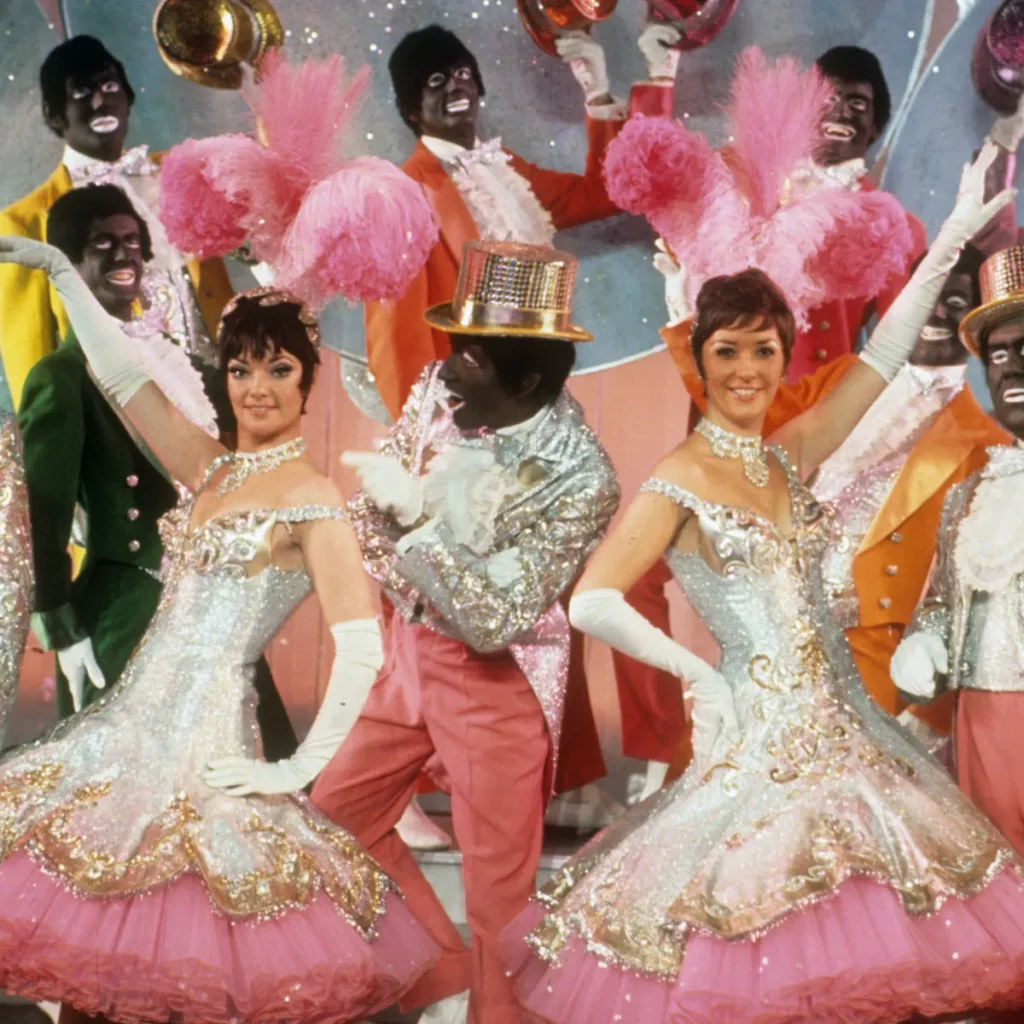
Today, blackface minstrelsy is seen as a national disgrace, a festering sore on Lady Liberty’s genitals, but back in the day it was prestigious: America’s first contribution to the world of theater! It lost popularity before the turn of the century but cast a long shadow after it: lots of old TV and radio networks have minstrelsy or minstrelsy-adjacent crap in their vaults. None of this will ever see broadcast again; or, if it does, will be preceded by a scold session by Leonard Maltin about how IT WAS WRONG THEN AND IT IS WRONG NOW.
Minstrelsy is slightly less offensive in Britain, where shows existed pretty much up until the Thatcher years (the above image is from The Black and White Minstrel Show, which aired on the BBC from 1958 to 1978). It’s considerably less offensive in Japan, where minstrel–inspired characters can be seen in mainstream anime from the 90s to the current day.

Minstrelsy’s current influence is hotly debated. Mickey Mouse wears white gloves; is he minstrelsy-derived? Apparently not: Walt didn’t like how Mickey’s hands disappeared in front of his body, hence, white gloves (plus it’s creepy for a mouse to have human hands). But that’s exactly what you’d claim in the 50s, with the NAACP accelerating to ramming speed up your ass, isn’t it? Likewise, is Jar Jar Binks a minstrel character because he flaps his hands and speaks in a Jamaican-sounding patois? Who knows? Minstrelsy embodies an odd contradiction: the further back in time it slips, the more sensitive we become to it. The less it exists, the more it exists. Today, anyone darkening their face for any reason is accused of continuing the shameful tradition of blackface, even when they’re a dumb teenager who has never heard of minstrel shows.
I mentioned that the Censored Eleven are banned. What does that mean? That they are not broadcast on TV or featured on home video releases. It’s 2023, and that will not stop you from seeing them. Many shorts are in the public domain and can be streamed from fucking Wikipedia. The rest are easily available from Dailymotion, Vimeo, and the trenchcoat of a local pervert who trades tapes for sexual favors. Companies can’t put a moat around their intellectual property anymore: and this supposed “ban” is probably just funneling tens of thousands of curious viewers toward the Censored Eleven.
Let’s actually talk about the shorts.
They’re fascinating cultural artifacts. All of them are racist, but not always in the same way or to the same degree. Some are mild, with depictions of black people best described as “condescending”. There’s a lot you could say about “Sunday Go to Meetin’ Time”, but it wouldn’t be “this was made by a person who hates black people.”
Other shorts (particularly Tex Avery’s and one of Friz Freleng’s) are cruel and mean, with a tone of “Ha ha, look at these stupid fat-lipped jigs”. It’s very hard to defend them. Warner Bros made nasty cartoons for nasty people. Sometimes this felt liberatory, a reprieve from Disney’s conservatism. Other times the nastiness was directed at big sections of humanity on the basis of their ethnicity or skin color.
The shorts were produced between 1931 to 1944. American culture underwent several shifts in this decade-and-a-half, and we see the shifts echo in the shorts. The last few have little to do with minstrelsy (aside from the unfortunate character design), and instead contain historically interesting portrayals of jazz and the Harlem Renaissance. A couple verge on being WWII propaganda. One seems thirty years ahead of its time.
I will grade the Censored Eleven shorts by the only things I care about
- quality
- racism
- whether anyone gets raped or murdered
Hittin’ the Trail for Hallelujah Land

Rudolph Ising’s 1931 short is the oldest on the list but otherwise isn’t notable at all. A parody of Disney’s “Steamboat Willie”, it stars the now-forgotten Piggy, who steers a paddlewheel steamer down a river.

Enquiring minds want to know: is Piggy a ripoff of Mickey Mouse? Well, Mickey was introduced in 1928 and Piggy was introduced in 1931, which fact-checkers suggest is a later date than 1928. But according to one legend, Ising’s partner Hugh Harmon drew some sketches of mice in 1925, which inspired Walt’s partner Ub Iwerks to create a mouse character. Mickey may be a ripoff of Piggy. In fact, I’ll go a step further: Mickey is stolen from Piggy and Piggy is stolen from Mickey in an endless revolving vortex of mutual plagiarism that is both logically impossible and threatens to tear the universe asunder. No further questions.
The story is a mess. Random characters have adventures, none of which connect. A villain appears out of nowhere with no setup. Cartoons in the late 20s weren’t storyboarded as they are now: they were just gag after gag, strung on a filmreel like beads on a necklace. A short like “Hittin’ the Trail for Hallelujah Land” is closer to improv comedy than it is to storytelling, and should be watched as such.
Why is this on the Censored Eleven? There’s a bearded Uncle Tom figure, who drives a horse and cart and gets in some trouble with skeletons (ripped off from “Skeleton Dance”). I wouldn’t have figured he’s meant to be a black man unless I’d been told.
“Steamboat Willie” works because of the contrast between the cute main character and the fact that he’s a one-mouse tornado of sadistic, unprovoked violence (or, as comedian Branson Reese put it, “It makes sense that Disney hung their hat on the part of this where Mickey is whistling and driving the steamboat because it’s the only eight seconds of this entire short where he isn’t assaulting somebody.“). By contrast, “Hallelujah Land” is weak stuff. Ising finally gets into second gear at the end, when a lecherous paddle-wheel boat captain gets dropped ass-first onto a sawblade. If the whole thing had been like that, you’d have…well, a second “Steamboat Willie”.
Also, they’re not “hitting the trail” if they’re going by boat. I hope someone got fired over that blunder.
Quality: 4/10
Racism: 2/10
Murders/Rapes:
1 (attempted) rape: (the captain tries something with Piggy’s girlfriend. He is interrupted.)
1 murder: (I assume Piggy kills the captain at the end)
Sunday Go to Meetin’ Time
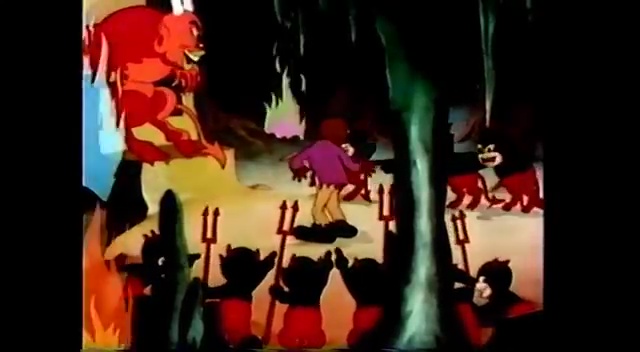
Nice, we’re in Technicolor.
Yikes, we’re in Technicolor.
Friz Freleng’s 1936 short is a preachy “Christmas Carol”-esque moral fable where black people are all going to church in their Sunday best…except for one ne’er-do-well who plays dice instead. (Dice come up a lot in the Censored Eleven. This was a real social concern at the time. Crack hadn’t been invented and booze was illegal, so the moral panic around “those people” was that they played craps.)
Our dubious hero bangs his head while chasing a chicken, and has premonitions of the fires of hell. He wakes up, decides to mend his ways, and dashes to church to pray. The last shot is of his silhouette, standing behind a stained-glass angel with a halo.
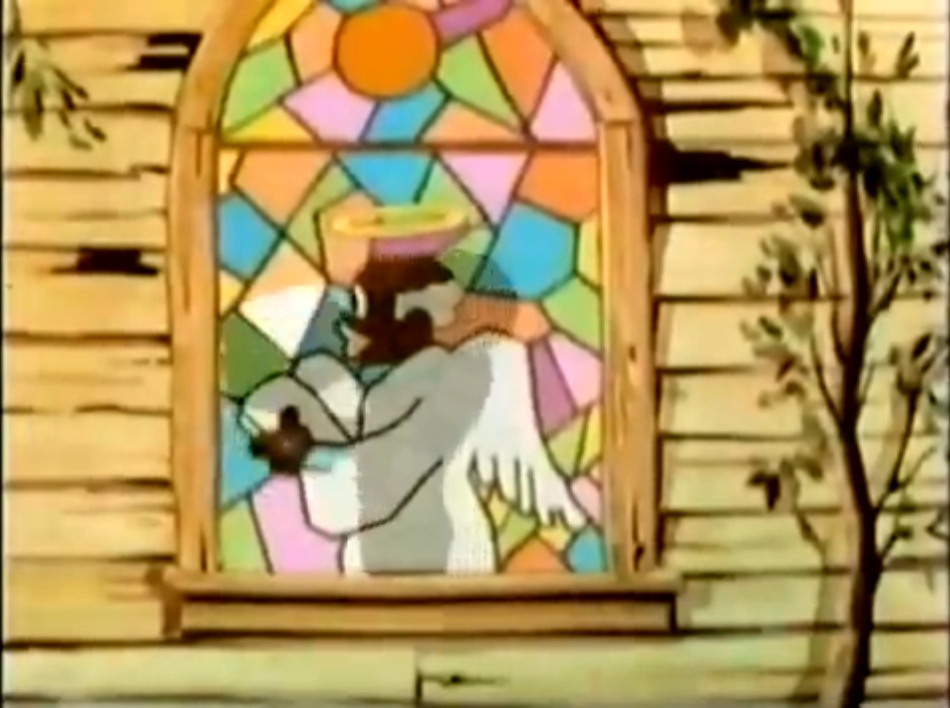
It’s maudlin and sentimental, with a moralizing tone that’s unusual for Warner Bros (and which, unfortunately, doesn’t allow room for many jokes). I absolutely believe Friz Freleng thought he was helping the black community with this cartoon. “This’ll straighten ’em out in Tulsa,” he thought as he drew the final cel, a tear twinkling in his eye.
Quality: 4/10
Racism: 4/10
Rapes/Murders:
None, although the main character has a near-death experience and I question his motives with that chicken.
Clean Pastures
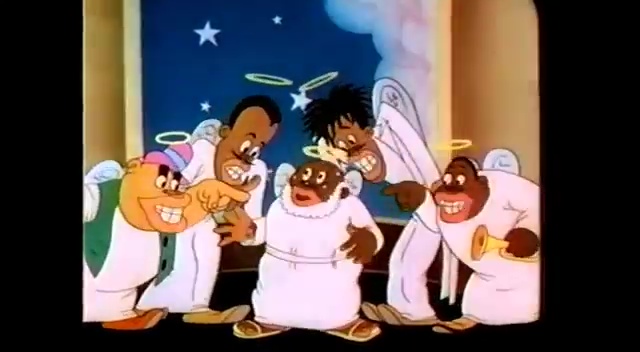
Truly, this walked so that Pixar’s Soul could run.
Made in 1937, it’s another of Freleng’s supernatural wheezes, with more gags, more jazz, more social commentary, and (unfortunately) more stereotypes. The racism dial isn’t yet at 11, but they’re starting to nudge it up a little, like an electric guitarist adding some fuck-you to his tone.
Black St Peter is admitting dead black people into black heaven (called “Pair-o-Dice”). Numbers just aren’t popping, so he sends a slow-witted angel to Harlem to save more souls. When the angel fails at this, a bunch of hep-cat musicians intervene, saying that they should be the ones to redeem Harlem, using the power of jazz! Much of the runtime is spent on lively (and very well-animated) jazz performances by grotesque minstrel caricatures of Louis Armstrong, Cab Calloway, and Fats Waller (who were just delighted by their portrayals in this, I’m sure).
And it’s moments like this where the legacy of the Censored Eleven gets tricky. Yes, it’s racist. But it’s also made by white people who went to jazz clubs in Harlem, loved what they saw, and wanted to share it with the world.
The short got producer Leon Schlesinger in trouble with the Hays Production Code. Not for racism as we now understand it, but because it portrayed figures such as St Peter as black, and also because it explicitly entwined jazz music with Christianity (the book to read on this subject is Hollywood Be They Name: African American Religion in American Film by Judith Weisenfeld). In the 1930s, jazz was regarded the way later generations would regard rock & roll and rap—the soundtrack of societal lawlessness. Having jazz as the music of Christian redemption was an incendiary statement that doesn’t translate correctly today.
But any attempt to reclaim “Clean Pastures” as an anti-racist text falters before the ugliness of its stereotypes. The stupid angel is a deplorable Stepin Fetchit knockoff, and the overall concept is muddled. Why are an army of black people shown walking to heaven on a kind of Bifrost bridge? Are these people dead? Did Louis Armstrong kill them? Did they voluntarily commit mass-suicide? The short raises questions that I honestly don’t want answers to.
Like “Meetin’ Time”, it tries to end on an uplifting note that rings hollow due to…well, everything before it. Even if it’s not exactly hateful towards blacks, I’m not sure that depicting them as grinning emptyheaded galoots is really any better.
Quality: 6/10
Racism: 5/10
Rapes/Murders: Several hundred thousand implied murders or suicides in Harlem
Uncle Tom’s Bungalow

Tex Avery is one of the great directors. Of animation, or just in general. He stretched his ink and paint creations into realms of such debauchery, lustfulness, and cruelty that it still feels a bit shocking, even from a distance of eighty years.
When he’s at his best, you’re belly-laughing while thinking “oh man, that’s too far”. This 1937 short is far from his best (it was made at a stage in Avery’s career where he was still credited as “Fred”), and although you’re thinking “too far”, you’re not laughing unless you’re in the Klan.
It’s a parody of Uncle Tom’s Cabin, a book I know nothing about. “Uncle Tom’s Bungalow” didn’t help matters. We are slowly introduced to about a billion characters, including the greedy hand-rubbing Simon Simon Legree, who I’m assuming is a Jew stereotype because Avery was known for carpet bombing as many minorities as possible (see “Car of Tomorrow”, which in the space of 10 seconds ridicules Native Americans, Chinese people, Scottish people, and then throws in a “women can’t drive!” joke to cap things off.)
The pacing is tepid, and although there’s one funny line (“…my soul belongs to Warner Bros!”), the gratuitous flogging gags are as reprehensible as anything in these shorts. What little goodwill is gained through amusing sight-gags (Simon Simon Legree slithers around like a snake as he searches for Uncle Tom…) is squandered by the ending, where Uncle Tom simply buys his freedom with money. Which he got by playing (and cheating) at craps. Great.
As with many of these, it’s nominally on the side of the black characters, but the humor ends up ugly and predictable places. At least find a creative way to be racist.
Quality: 3/10
Racism: 7/10
Rapes/Murders: Unusually for Tex, zero.
Jungle Jitters
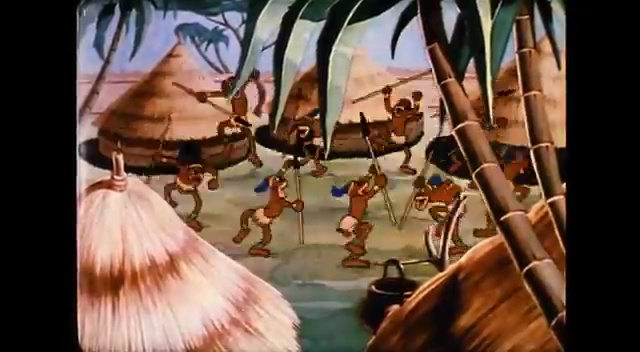
Friz Freleng directed this? I would have bet my last dollar on Avery.
Produced in 1938, this is the worst of the shorts; a dump truck of offensive humor with one gear: reverse.
Name a stereotype: it’s here. Cannibals, huge nose-rings, bones worn as jewellery, neck rings that stretch characters heads out like slinkies, Li’l Sambo, Uncle Tom, Stepin Fetchit, and Mammy. Honestly, “Jungle Jitters” is so stupid it’s almost beyond offensive. There’s a black man who speaks in a racist ching-chong Chinese accent. What do you even do with that?
It’s a mockery of door-to-door salesmen. A charmless parody of Goofy shows up at an African village, selling useless rubbish while wheezing at his own jokes. Like “Hittin’ the Trail for Hallelujah Land” seven years earlier, this attempt at satire falls flat, because Goofy is a fun character while this guy sucks. Send him back to his home planet.
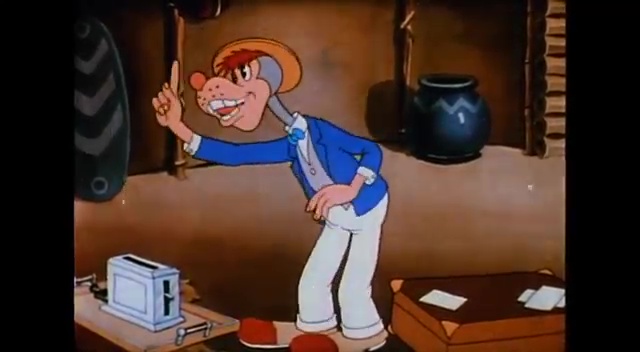
(Notice how weird it is that the dog has humanlike hands, complete with fingernails? That’s why we do white gloves!)
There are some cute gags in between the 12-gauge blasts of racism getting double-barreled into your face. The tribesmen frantically try to avoid contact with Dollar Store Goofy by shutting dozens of doors, et cetera. But then we see the queen of the village, who is white, and old, and wants to have sex with I Can’t Believe It’s Not Goofy. He’s horrified by the idea, and jumps into the cannibals’ pot. It’s upsetting, quite frankly.
Quality: 3/10
Racism: 10/10
Rapes/Murders:
+1 Attempted Rape (the queen)
+1 Suicide (Goofless)
The Isle of Pingo Pongo
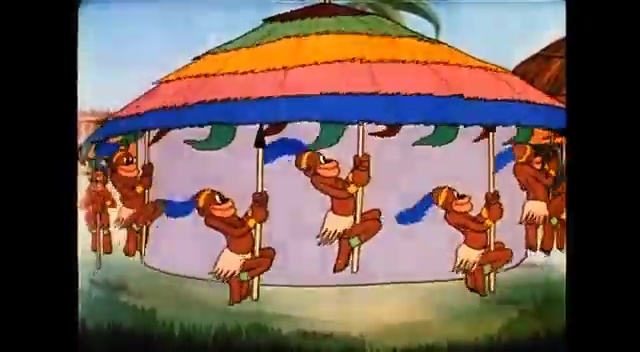
It’s from 1938, it’s by Avery, and Christ on a bicycle, that’s the actual title. Reminds me of being a kid, and having an elderly family friend (“a man of his time”, as they say) allow me to read unlimited books from his private library. I thought I’d landed on my feet, but his “library” turned out to be a million adventure pulps from the forties, with titles like The Brave Caucasian Boy Scout Meets the Ooga Booga Cannibals.
The cartoon starts out well enough, by skewering travel film cliches. Travelers go on a ridiculously convoluted voyage, bypassing places like “Canary Island”, with all the expected gags (Avery never let a good pun pass him by. Or a bad one, if we’re being honest). A proto Elmer Fudd character (voiced by Mel Blanc) excitedly asks the narrator “n-n-now, boss?” while gesturing at a mysterious black bag. Chekhov’s Gun has appeared!
One of Avery’s directorial trademarks is “rigid object behaving like it isn’t.” It’s awkward to describe in words, but there’s a joke like this in every Avery short, and it cracks me up every time.

Also, does Avery want me to fuck the deer? Am I watching the furry fandom get invented in real-time or something?
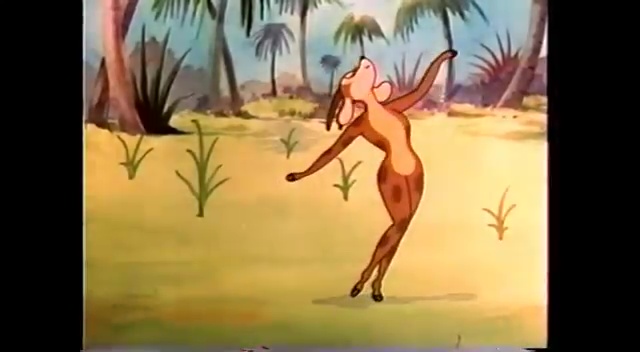
Then we arrive at Pingo Pongo, and the offensive stereotypes arrive at a double pace march. It manages to be nearly as bad as “Jungle Jitters” in half the time, and there’s little humor to allay the pain. Every gag from about 4 minutes onward is either “Ha ha, this primitive tribesperson is doing something unexpected!”, or a reference to celebrities and movies and Hollywood restaurants (??) that you basically need a film studies degree to understand now.
Production values are cheap. Tex Avery liberally recycles footage from other shorts (the dancing chorus-line gals are from “Clean Pastures”), and when that’s not enough, he pads out the runtime with live-action stock footage. I swear the musical sequences goes on for at LEAST nine minutes, which is odd, because the total running length of the short is 8:42.
Then, at the end, Beta Release Elmer Fudd finally gets the okay from the narrator to do whatever we’ve been waiting for him to do. He pulls out a gun from the black bag and shoots the sun—bang!—causing it to fall from the sky.
Aside from “What’s Opera, Doc?” this is the only known case of Elmer Fudd successfully killing something.
Quality: 3/10
Racism: 9/10
Rapes/Murders: None, unless you count the sun. Hopefully it’s not really dead, or the short implies the subsequent death of the entire world population at the time, which was 2.2 billion people.
Coal Black and de Sebben Dwarves
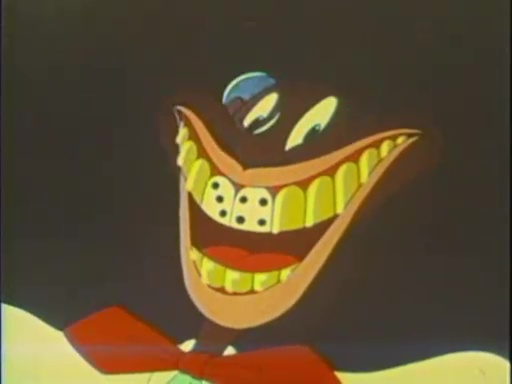
As the title implies, it’s a parody of Disney’s groundbreaking 1937 masterpiece Get Fucked, Art Babbitt.
This is often regarded as “the good one”, and I’m not disagreeing. Rod Scribner’s animation is fantastically bouncy and well-timed. It’s a masterpiece of stretch-and-squeeze, antics, negative space, and all that good shit.
I’ve long argued the proposition “Disney has better animation and Warner Bros has funnier writing” is like saying “the world is a sphere”: in general it’s true, but you gotta contend with the Mount Everests and Marianas Trenches that break the trend. Disney’s “Autograph Hound” is hilarious: on a script level it can hang with any Warner Bros short you can name. Likewise, “Coal Black and de Sebben Dwarves” shows just how great WB animation could get.
Good animation is just the start of why this short works: it’s incredibly driven and energetic. I just typed “history’s first blaxploitation film”, and then deleted it in shame. Obviously blaxploitation was not invented by white Californian honkies in the Great Depression: that’s both offensive and silly. But the thought wouldn’t leave me be. “First blaxploitation film” simply doesn’t feel like a lie, even though I intellectually know it is. So notice what I did: I found a way to mention blaxploitation while simultaneously denying that I mentioned it. I’m smart like that.
It definitely has the same swagger as a Mario van Peebles or Pam Grier film. It’s crude and lewd and gritty, full of fast cars and lurid criminality. Snow White and the Prince are portrayed as hyper-sexualized badasses. The fact that “Prince Chawmin'” has dice in his teeth (!!) is both ludicrously racist and exactly the type of joke you get in a real blaxploitation film.
Obviously, that kind of hyper-stylized portrayal hits different when it’s created by black artists themselves, rather than white guys who pay rent by doodling Tijuana Bibles on the side. But believe me, sometimes multiple people hear the same song. This absolutely has some blaxploitation spirit.
In the second half, we see our first glimpse of World War II: Snow White ends up ironing clothes and cooking fry-ups for the “dwarves” (a bunch of black GIs who look like Fats Waller). From there, things follow the Snow White formula, although there’s a twist at the end that’s pretty fun.
I enjoyed it. Racism aside, my only criticisms is that it isn’t that well constructed (the segue from “Hot Jazz Snow White” to “WWII Propaganda Film” is tonally awkward), and many of the jokes are more “I can’t believe they went there” than actually funny.

Quality: 9/10
Racism: 7/10
Murders/Rapes:
+1 Attempted murder (Snow White)
+4 Rapes (it’s implied that Snow White has sex with the Murder Inc goons so they won’t kill her. She seems happy with the situation but I don’t think you can meaningfully consent to sex when the alternative is death.)
All this and Rabbit Stew
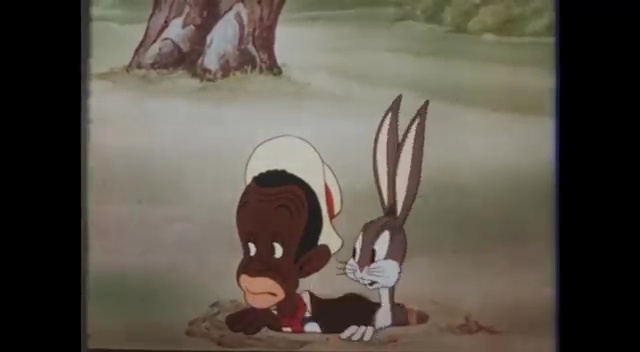
Avery’s last contribution to the Censored Eleven (in 1941) is notorious for one huge reason. And it’s not the racism.
See, the rest of the Censored Eleven either involve disposable one-and-done characters, or generic cultural icons like Li’l Sambo and Uncle Tom. They are easily divorced from the larger canon: they simply don’t feel like “real” Warner Bros.
…Except for this one, which stars the most famous Warner Bros character of all time. Want to be a Bugs Bunny completionist? Want to (legally) own all of the character’s adventures on physical media? Sorry, you can’t do that! “All This and Rabbit Stew” will forever remain unreleased, taunting you like a white whale. Or not-so-white, as the case may be.
It’s a classic Bugs Bunny vs Elmer Fudd matchup, except Elmer is replaced by a black Stepin Fetchit stereotype. He’s lazy, whiny, is voiced by Mel Blanc in a nigh-incomprehensible argot that makes Elmer Fudd’s speech impediment sound like the queen at high tea, and is obsessed with playing craps. We end with Stepin Fetchit literally losing his clothes and gun to Bugs because he gambled them away.
It has some surrealist charm. As I said when I reviewed Der Fuehrer’s Face, it’s mind-blowing to see Donald Duck do a Nazi salute, and this gives the same sense: your brain just became the watermelon in a Gallagher act.
But it wasn’t meant to be surrealist. That’s the problem. You’re supposed to laugh at a stupid lazy black person. There’s really no other level on which to analyze it, unless you’re being dishonest.
Elmer Fudd’s character is “nebbish Terminator”—his mild-mannered demeanor is totally at odds with his singleminded pursuit of Bugs’ destruction. And it’s dark. He’s trying to kill the wabbit. As u/YOGZULA said on Reddit: “If Elmer Fudd spent all of his time trying to rape Bugs Bunny, it would be horrific. But since he’s trying to murder him, it’s OK.” That’s the fun of Warner Bros—the sense they’re skating against, if not crossing over, some dangerous line in their storytelling.
But here, they’re recontextualizing the character in a way that doesn’t work, despite the Avery’s fast and furious gagwork. If Elmer Fudd is a milquetoast Captain Ahab, defeated by Bugs’ cunning: Stepin Fetchit is just the cruel butt of a joke, defeated because black people display a Pavlovian reaction to the sound of rattling dice. There’s no joke there, just a sinister message that isn’t even buried in subtext.
Quality: 5/10
Racism: 7/10
Rapes/Murders: None. Unless you count Elmer Fudd on a spiritual level.
Tin Pan Alley Cats
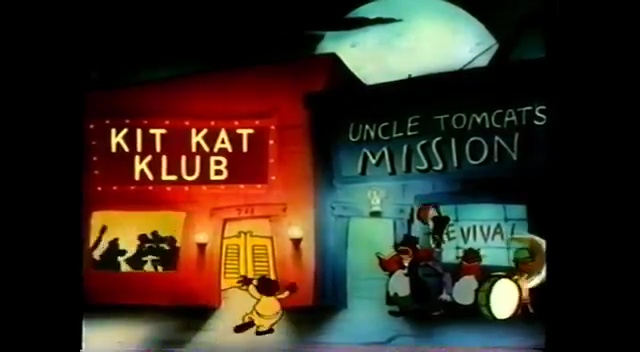
Bob Clampett’s 1943 short is basically pieces hacked out of other cartoons, with a few minutes here and there of original footage.
It’s official: the Censored Eleven are running on fumes. Much of this short is just a colorized version of “Porky in Wackyland”, and even the stereotypes seem lame and desperate. They re-use their Fats Waller design again. Black men in 1940s cartoons got to choose between Uncle Tom, Stepin Fetchit, a native with a bone through his nose, and Fats Waller. (Black women got their choice of “hyper-fuckable Jezebel” and “Mammy”). Fats sadly died later that year, possibly out of desire to never see his likeness in a Warner Bros cartoon ever again.
(Also, why is he always portrayed as short in these? He wasn’t in real life!)
Plot: Fat Cat is on the town, seeing what’s good. He encounters a bunch of lame gospel musicians, who want him to join them. But Fat Cat wants to swing, damn it, so he enters the ominously-initialed “Kit Kat Klub”. Inside, he’s transported by a jazz trumpeter into a surrealist realm that’s…well, Wackyland.
There’s not much to say about this. On a surface level, the plot is similar to Sunday Go to Meetin’ Time. But here, we’re supposed to regard the protagonist as a simpleton who overestimates his ability to handle the radical freedom of jazz. He ends up back with the gospel choir, frantically banging a drum and singing “Give Me That Old Time Religion.”
This is probably the least racist of the Censored Eleven, measured by volume. This, more than any other short, does not belong on the list.
The Censored Eleven are cartoons so deeply saturated in offensive tropes that they cannot be saved in any way. You can’t make them better by editing them. Cutting the bad stuff out of “Jungle Jitters” would make it around thirty seconds long. Even milder fare like “Hittin’ the Trail for Hallelujah Land” features a prominent minstrel character—remove him, and the story makes no sense (not that it really does anyway). Take them or leave them: the Censored Eleven are what they are and cannot be changed, only ruined.
But “Tin Pan Alley Cats” easily could have been edited. Snip about five seconds of footage (the black man eating chicken, the sexpot black woman, the KKK sign, and Hitler/Tojo) and you’re golden. Nobody would even notice. So why didn’t they do that?
Probably because it’s not worth it. It’s only valuable as a colorized of “Porky in Wackyland.” And in 1948 they made an actual colorized “Porky in Wackyland”, making this one even more redundant.
Quality: 3
Racism: 2
Rapes/Murders:
- None, although Fats Waller attempts to stalk an attractive black woman. She takes refuge behind her huge boyfriend.
- In Wackyland, Joseph Stalin is seen kicking Adolf Hitler’s butt. In real life, the two men shared a tumultous relationship that eventually led to Hitler’s death. Sorry to all JoDolf stans, but the WWII fandom needs to stop normalizing toxic ships.
Angel Puss
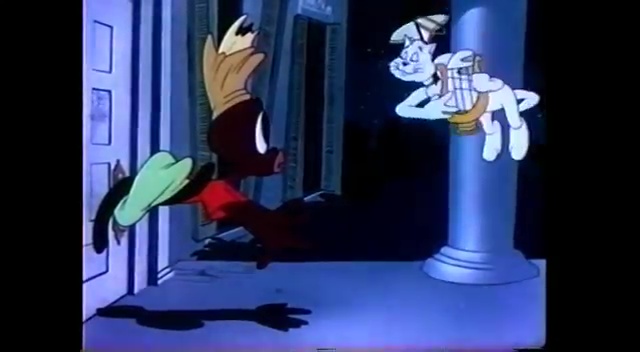
Chuck Jones’ lone contribution to the list is a miserable hellish nightmare about a Li’l Sambo clone who is paid to drown a cat in a river. Gotta hand it to Chuck, he keeps the laughs a’comin’!
The cat survives, paints himself white, and pretends to be a ghost who has come back from the grave to torture the guilt-ridden black man. This incredibly unfunny premise is paced very slowly, and no amount of sight gags can overcome the fact that the audience sympathy is so miscalculated.
In theory, we’re supposed to root against Li’l Sambo, and want him to get his just desserts. So why make him sympathetic (he cries, mopes, and feels depressed when he “kills” the cat)? Meanwhile, the cat’s a sadistic, vengeful bastard who’s never in actual danger of drowning (he’s two steps ahead of Li’l Sambo at every stage), so who’s side are we on?
Yet again, we get the “black people are hypnotized by rattling dice” trope. Even in 1944, this must have seemed stale and hack. Then we get the ending, which is so so swing-for-the-fences nihilistic that it’s almost, but not quite, succeeds. It is still not funny.
I watched this once for this review. If I watch it again, it will be a dark, dark day. Jones was a talented director; he was also an vainglorious egomaniac who refused to ever admit he was capable of a mistake. This cartoon provides the prosecution’s brief that he was.
Quality: 1
Racism: 5
Rapes/Murders
+1 or +2 murders (depending on what happens after the end).
Goldilocks and the Jivin’ Bears
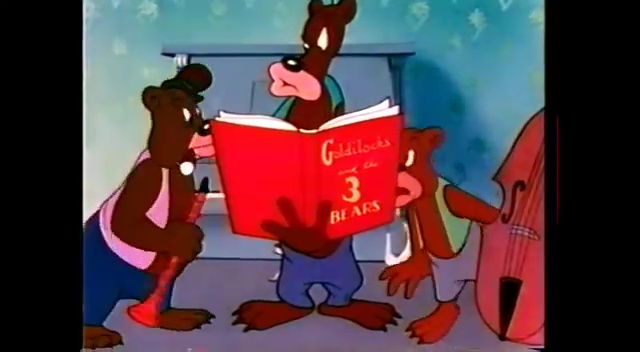
Friz Freleng returns to close out the Censored Eleven in 1944. Three black bears, they never went to school, but when it comes to jivin’, they nobody’s fool!
It’s one of the stronger ones. It might be my second favorite, behind “Coal Black”. The music is great, and the animation rises to match it (the little bear plucking the strings on his bass with all four limbs at once is a hilarious visual).
You can sense the tidal swells happening in American culture: there was no market left for minstrelsy, and even Stepin Fetchit had retired. Instead, the cartoon is hip, fresh, and dare I say it, a fairly positive portrayal. It’s mostly just a straigtforward celebration of jazz music.
Like “Tin Pan Alley Cats”, it’s one of the less racist entries. The bears are obviously supposed to be black jazzmen, but aside from their huge lips, it’s not an angle played for laughs.
Goldilocks looks great—she’s maybe the best-drawn woman in all of these. Little Red Riding Hood looks far more stereotypical, and I assume she’s the reason it’s on the list. The combination of “horny wolf and attractive young woman” really was winning combination for Warner Bros, isn’t it? I’m beginning to think Friz Freleng taught Tex Avery everything he knew…
Quality: 8/10
Racism: 3/10
Rapes/Murders
+1 or +2 (attempted) murders (the Big Bad Wolf plans on eating Grandma, and possibly the Jivin’ Bears plan on killing the wolf with their magical dance powers)
+1 or +2 (attempted) rapes (the Wolf is shown non-consensually dancing with Goldilocks instead of eating her, so apparently his interest is sexual. I would also question Grandma’s behavior with the wolf at the end.)
Conclusion
It was not “these shorts should be incinerated.”
They have positive aspects: including good jokes, good music, good animation, and some fascinating glimpses into the past. This is true.
However, most of them depict black people as grotesque, horrifying monsters with Hindenburg-sized lips and room-temperature IQs who are MKULTRA-programmed by the sound of rattling dice. This is also true.
I would not presume to tell anyone they cannot be offended by this. Yet there are some mitigating factors. Minstrelsy-like depictions of black people were common once, and these aren’t notably worse than the norm. And many shorts treat black people with a paternalistic, misguided kind of affection—as well as a fascination with black art forms, most notably jazz. Maybe this moves the needle for you or maybe it doesn’t.
But here’s a quote I think about a lot. It is attributed to Schopenhauer. Which means you can safely bet your life it is by one of the 10 billion other people who have lived who are not Schopenhauer.
If you have a barrel of fine wine, and you add a teaspoon of sewage, now you have a barrel of sewage. On the other hand, if you have a barrel of sewage, and you add a teaspoon of wine, you do not have a barrel of wine. You have another barrel of sewage.
The Censored Eleven are like a wine/sewage mixture. Pretty damn vile, but there’s some interesting floral notes there, lurking among the sewage…
(**Without getting too deep in the weeds, the Censored Eleven are also the result of rights issues. Basically, the Eleven were part of a package of pre-August 1948 shorts purchased by the Associated Artists Productions library, which was later sold to other holders. The distribution rights were eventually held by United Artists, who decided not to allow syndication of the shorts in 1968. This is why other—often equally racist—are not on the list. While I wouldn’t hold my breath waiting for the likes of Friz Freleng’s “Hiawatha’s Rabbit Hunt” to return to TV, it was never part of the AAP’s package and was not and will never be in the Censored Eleven.)
No Comments »
